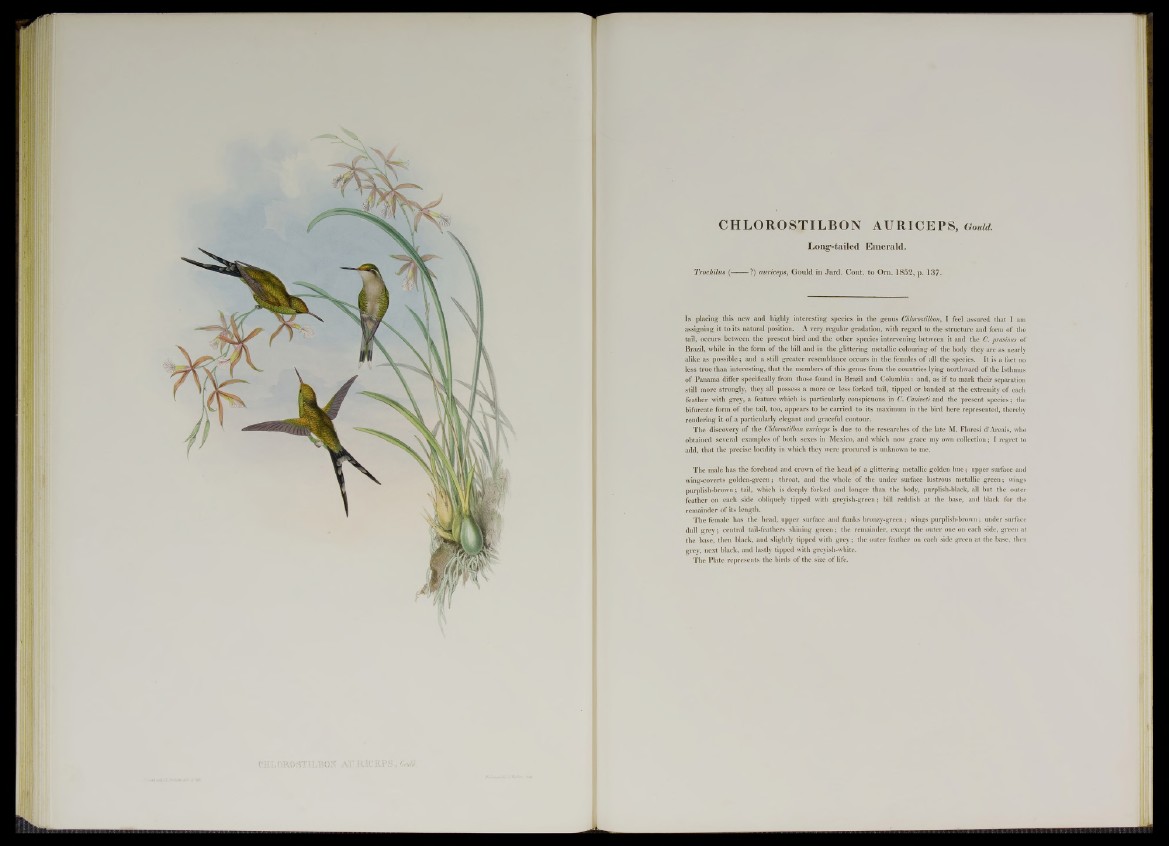
CHLOROSTILBON AURICEPS, Gould.
Long-tailed Emerald.
Trochilus (--------?) auriceps, Gould in Jard. Cont. to Om. 1852, p. 137.
I n placing this new and highly interesting species in the genus Chlorostilbon, I feel assured that I am
assigning it to its natural position. A very regular gradation, with regard to the structure and form of the
tail, occurs between the present bird and the other species intervening between it and the C. prasinus of
Brazil, while in the form of the bill and in the glittering metallic colouring of the body they are as nearly
alike as possible; and a still greater resemblance occurs in the females of all the species. It is a fact no
less true than interesting, that the members of this genus from the countries lying northward of the Isthmus
of Panama differ specifically from those found in Brazil and Columbia: and, as if to mark their separation
still more strongly, they all possess a more or less forked tail, tipped or banded at the extremity of each
feather with grey, a feature which is particularly conspicuous in C. Caniveti and the present species; the
bifurcate form of the tail, too, appears to be carried to its maximum in the bird here represented, thereby
rendering it of a particularly elegant and graceful contour.
The discovery of the Chlorostilbon auriceps is due to the researches of the late M. Floresi d’Areais, who
obtained several examples of both sexes in Mexico, and which now grace my own collection; I regret to
add, that the precise locality in which they were procured is unknown to me.
The male has the forehead and crown of the head of a glittering metallic golden hue; upper surface and
wing-coverts golden-green; throat, and the whole of the under surface lustrous metallic green; wings
purplish-brown; tail, which is deeply forked and longer than the body, purplish-black, all but the outer
feather on each side obliquely tipped with greyish-green; bill reddish at the base, and black for the
remainder of its length.
The female has the head, upper surface and flanks bronzy-green ; wings purplish-brown; under surface
dull grey; central tail-feathers shining green; the remainder, except the outer one on each side, green at
the base, then black, and slightly tipped with grey; the outer feather on each side green at the base, then
grey, next black, and lastly tipped with greyish-white.
The Plate represents the birds of the size of life.